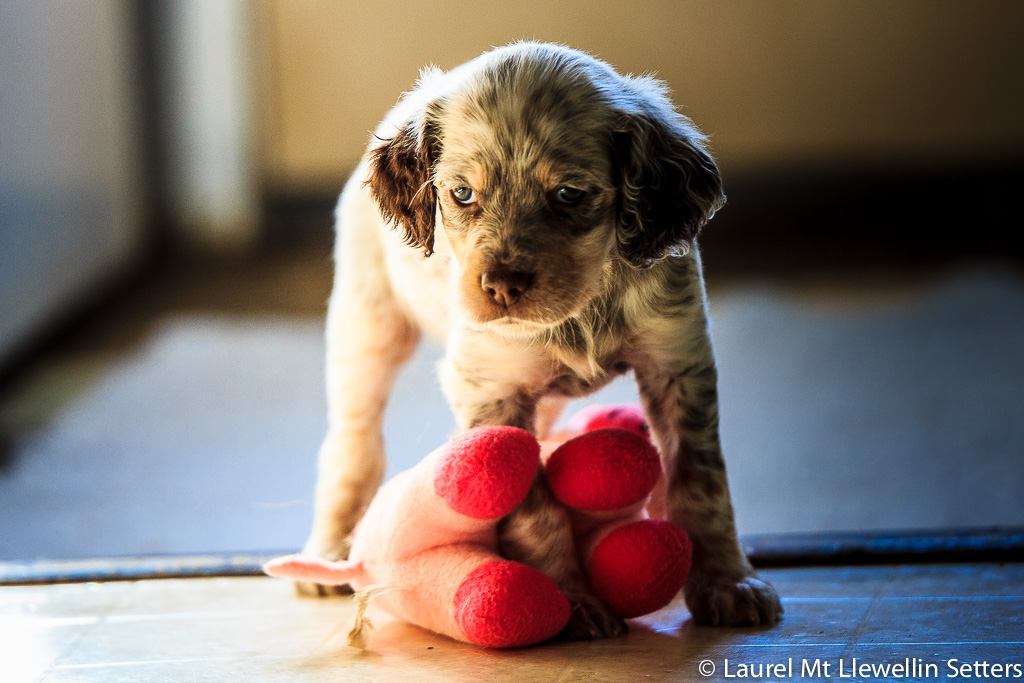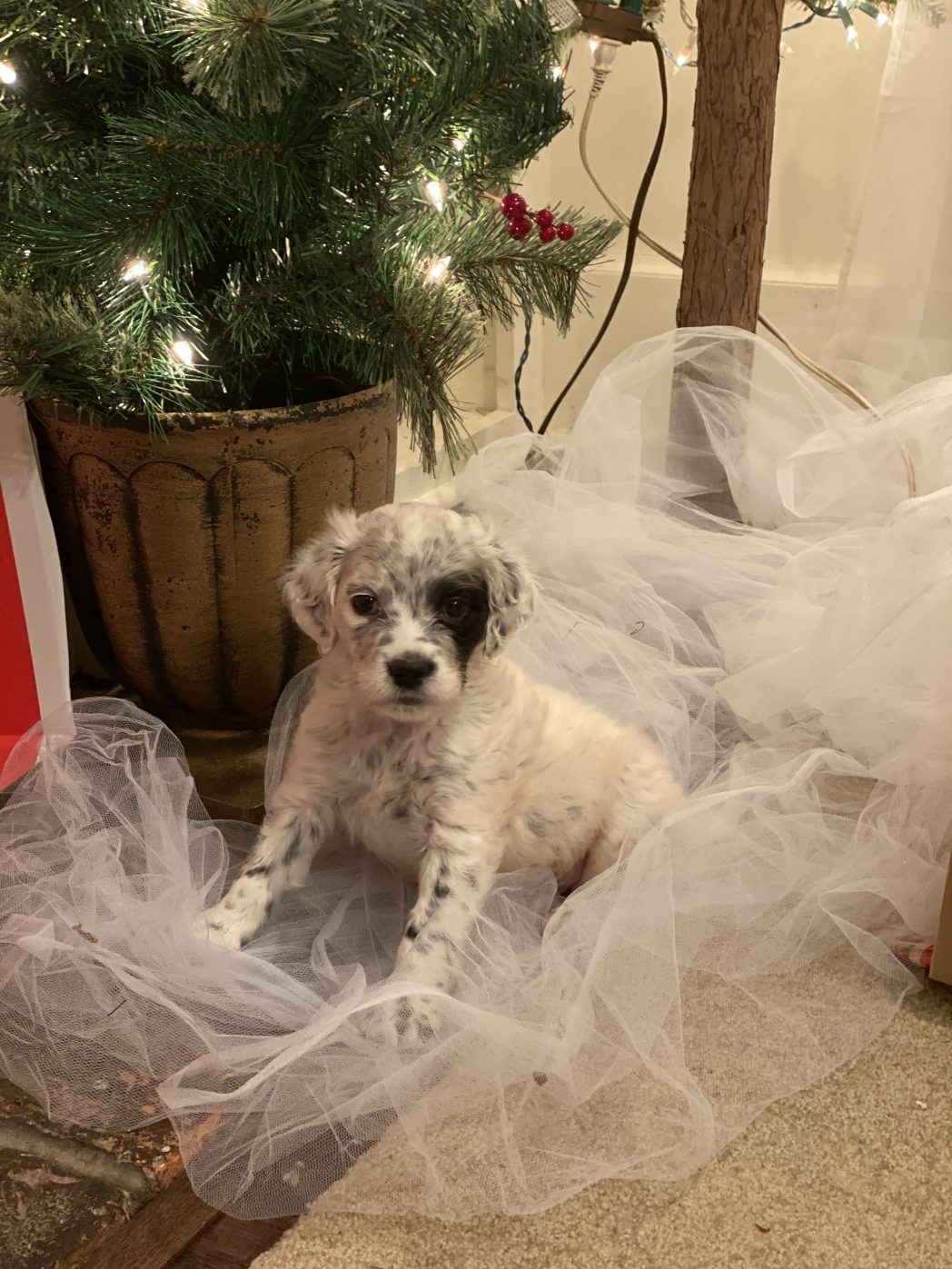The Ultimate Guide to Puppy-Proofing Your Home: Tips and Innovative Products
My mission is to help you have a healthier dog and breeders to raise healthier Llewellin Setters puppies through educational content based on over twenty years raising, training, and breeding Llewellin Setters. To help support these efforts, this page may contain affiliate links. I may earn a small commission for qualifying purchases at no cost to you.
Bringing home a new puppy is an exciting time, but it also comes with a lot of responsibilities. One of the most important tasks is ensuring that your home is safe and secure for your new companion. Puppy-proofing your home is essential to prevent accidents, protect your belongings, and keeping you and your puppy healthy and happy. In this comprehensive guide, we will explore top tips for puppy-proofing your home, as well as innovative recommended products that can make the process easier and more effective.
- Understanding the Puppy’s Perspective:
Before diving into the specifics of puppy-proofing, it’s crucial to understand how puppies explore their environment. Puppies are naturally curious and love to investigate new objects, chew on things, and get into tight spaces. They also have a knack for finding hidden dangers. By keeping this in mind, you can anticipate potential hazards and take proactive measures to prevent accidents.
- Assessing Potential Hazards:
The first step in puppy-proofing your home is to conduct a thorough assessment of potential hazards. Start by getting down on your hands and knees to view your living space from your puppy’s perspective. Look for items that could pose a threat, such as toxic substances, small objects that can be swallowed, sharp edges, electrical cords, breakable decor, children’s toys, clothing, and low-hanging curtains or blinds.
- Securing Toxic Substances:
Puppies are notorious for chewing on anything they can get their paws on, including household chemicals, medications, and plants. To keep your puppy safe, store all toxic substances out of reach in locked cabinets or high shelves. Consider installing child-proof latches on bottom cabinets. Additionally, consider switching to pet-friendly, non-toxic cleaning products such as vinegar and baking soda to minimize the risk.
- Managing Electrical Cords:
Exposed electrical cords are not only unsightly but also dangerous for your puppy. Puppies will chew on cords, resulting in electric shocks or other serious injuries. To protect your puppy, and keep you from becoming frustrated, secure cords using cord protectors, cord guards, or conceal them behind furniture. Alternatively, consider using cord organizers that keep the cords neatly bundled and out of reach.
- Preventing Choking Hazards:
Puppies have a tendency to chew on small objects, which can become choking hazards. Ensure that all small items like coins, buttons, legos, office supplies like rubber bands and paper clips, pens, markers, etc., hair accessories, jewelry, screws, nuts, bread ties, etc., are kept out of your puppy’s reach. Be cautious when choosing toys as well, opting for those specifically designed for puppies and avoiding small parts that can be easily swallowed.
- Eliminating Sharp Edges:
Sharp edges on furniture or household fixtures can cause injuries to a curious, jumping puppy. Use edge guards or corner protectors on tables, cabinets, and other furniture to minimize the risk. Additionally, be mindful of open drawers or doors that can accidentally slam shut on your puppy’s paws or that they can hit their head on when jumping up. How many times have you cringed when you hear the thud of a puppy hitting its head on the underside of a table? If you can do something about it, do so until the rowdy stage ends.
- Blocking Off Restricted Areas:
There may be certain areas in your home that you want to keep off-limits for your puppy, such as the kitchen or your home office. Install baby gates or pet gates to restrict access to these areas. Look for gates that are sturdy and easy to install, providing a secure barrier that your puppy cannot jump over or push through. I have found the type with vertical bars and a walk-through door work fantastic. They come in various heights and adjustable widths. I recommend the tallest possible. You can’t believe how quickly a wee pup can grow and we underestimate their climbing abilities.
- Managing Houseplants and Landscaping:
While houseplants can add beauty and create a healthy environment in your home, some can be toxic to pets if ingested. Research which plants are safe for dogs and ensure that any toxic plants are kept out of reach or replaced with pet-friendly alternatives. Hanging plants or elevated plant stands can help keep them away from curious paws.
Your beautiful landscaping may contain poisonous plants and puppies love to romp through it and chew on every bit of it–leaves, flowers, mulch, decor, etc. Consider garden/landscape fencing to keep pups out of your beautiful–and potentially toxic–flower beds. Most landscape fencing isn’t tall enough to keep pups out for long (they can easily jump over it in a few months), but it serves as a boundary for a few months until the pup can be taught to stay out. I find this particularly difficult for bird dogs because we want them busting cover while hunting, right? But with diligence and consistency, pups can be taught your flower beds at home are off-limits.
- Securing Trash and Recycling Bins:
Puppies have an uncanny ability to find their way into trash and recycling bins, which can contain harmful substances or objects that pose a choking hazard, not to mention the disaster you’ll have to clean up. Invest in pet-proof bins with secure lids or keep the bins in a cupboard or behind closed doors. Pups love to raid the bathroom office trash bins so don’t forget those as well.
- Protecting Furniture and Belongings:
Puppies love to chew, and your furniture and personal belongings will fall victim to their teething phases. To protect your valuables, consider using bitter-tasting sprays or pet-safe deterrents on items you want to keep off-limits. Find new homes for any items you do not want your puppy to have access to that can also harm them, such as socks, shoes, handbags, chargers, children’s toys–anything from at least below your waist should be put up and away. Puppies love to chew and swallow socks and wash cloths and they love to steal them off counters, dressers, the bathroom vanity, etc. This will end up with an expensive visit to a veterinarian hospital for surgery (if you are lucky enough to catch it in time. These items end up twisting a puppy’s intestines). Provide your puppy with a variety and lots and lots of appropriate chew toys to redirect their chewing behavior. Do not forget that puppies must chew during teething–just as babies teething–so provide them with things that are safe and allowed to chew and keep everything else picked up and put away out of site. Even older dogs will still steal a glove, socks, and wash cloths. Just get into the life-long habit of putting everything away and take the opportunity when they do get a hold of something they shouldn’t, that you teach “drop-it”.

Recommended Puppy-Proofing Products:
Following are a few essential products to help you prepare and puppy-proof your home:
- Nature’s Miracle Dog Stain & Odor Remover: When it comes to pet cleaning products, you can’t get better than Nature’s Miracle. It is consistently voted as the best enzyme cleaner for puppy accidents. The brand’s highly popular stain and odor remover has a light citrus scent that instantly replaces the problem area’s previous smell, and the enzymatic formula effectively erases all traces of pet-caused stains. Use it on any surface.
- Baby/Pet Gates: You will need baby gates. Get a few. There are many styles from basic to walk-through and adjustable to wide or narrow doorways as well as specialized for the top or bottom of stairs. I definitely prefer the walk-through type as it can be tedious and dangerous to step over gates constantly. Get the highest possible as your wee 8-week-old puppy will grow quickly. I’ve had dogs easily jump over gates. Be sure to get a gate with vertical slates as the criss-cross types leave perfect places for puppy paws to climb up the gate.
- Portable Puppy Pen: A portable puppy pen is essential and a life-saver, both for the pup and you. Put it in a room to keep pup confined until completely house-broken, to keep out of trouble while you work, clean, etc. I love these expandable systems that can be made as big or small as you need. But I have one of these, too. Take them camping and set up a perimeter for them to play in. Get a few sets to have in different rooms, or one inside and one for outside or travel. I like to make the area large enough for some play space and for their crate to fit inside. Better, yet, I cut an opening to fit the crate on the outside (so they do not climb on to the top of the crate and then try to get over the pen.
- Puppy Crate: Get a good puppy crate. Do not be tempted to get a large one that they will grow into. This is a mistaken made by many. Dogs are denning animals and the closed-topped, plastic crates make them feel safe. Not the open-cage-type, please, they are nothing like a den. Get a crate with enough room for the pup to stand up, turn around and lay comfortably, but not larger. Too big and they have room to potty on one side and sleep on the other and the purpose of a crate is not only to keep them safe, but so they feel safe and like they are in a den. An intermediate, 28″ is usually the perfect size for an 8-week-old Llewellin Setter puppy with a bit of room to grow, and the linked one in the title is a #200, excellent for flying pups. I also recommend having an extra one or two on hand. One for their pen, one for the bedroom, one for the truck/car, etc. It is so nice to have extras already in place. And as soon as you can, invest in a better, safer, larger crate for your vehicle. You can’t beat a Ruff Land or Gunner kennel for safety. It is absolutely worth the investment.
- Cord Concealers: Cord concealers are fantastic for keeping cords neat and tidy and out of your puppy’s site.

Puppy-proofing your home is a vital step in ensuring the safety and well-being of your new furry family member. By assessing potential hazards, securing toxic substances, eliminating choking hazards, and using innovative products, you can create a safe environment where your puppy can explore and thrive. Remember, a well-prepared and puppy-proofed home will set the stage for a harmonious relationship with your new companion.
Hoping these suggestions help.
Love,
M.

You must be logged in to post a comment.